Summarizing News Articles
OVERVIEW OF THE ASSIGNMENT
The New York Times is a particularly useful source for teaching summaries because it is so flexible. Students can pick articles based on their interests, or you can assign a specific theme for students to pursue. Whether you assign articles, allow students to select articles, or some combination of the two, it is great practice for students to read prose by excellent journalists. There are many successful variations on this assignment (see below), though you will doubtless have some of your own!
The basic format of this assignment is straightforward: read an article, write an MLA citation, write a bulleted outline, write a paragraph of summary. Those deceptively basic skills provide the foundation for considerable progress in student writing. The assignment is very adaptable, but the core of it is remarkably beneficial for most other aspects of college writing.
Since good reading is the basis for most good academic writing, students must learn to connect the two. Composing summaries based on newspaper articles allows students to practice both reading and writing. This simple assignment assignment breaks down the process of summary into manageable steps that, with repetition, become natural for students as they gain confidence in reading college level texts. and develop vital tools to carry forward into their other courses.
To practice close reading
To learn to write the main idea and main points of an article
To learn to write a paragraph of summary based on a bulleted outline of an article
To practice MLA citation
To learn to select articles
To strengthen newspaper reading skills
To strengthen reading and summarizing skills through repetition
To encourage students to learn about current events
ADVICE FOR THE INSTRUCTOR
THE BENEFITS OF THIS ASSIGNMENT:
This assignment has been the basis for most of the success in our NYT courses. Students gain incredible confidence in themselves as readers, writers, and academics as a result of learning and practicing these summaries.
At the end of our courses, students often comment that doing repeated summaries has enabled them to be become stronger readers. Repeatedly summarizing New York Times articles transfers into an improved ability to read textbooks for other classes.
THE CHALLENGES OF THIS ASSIGNMENT:
Choosing how to use it! There are so many good possibilities that it can be overwhelming.
Also, it is important to construct a system that balances the benefits of having students write multiple summaries per week with the limitations of teachers' ability to grade. Fortunately, this assignment can be structured so that teachers do not have to review each summary carefully. Rather, they can be graded as a portfolio for a completion grade. This has the benefit of encouraging students to do more reading and writing without requiring a huge amount of grading for the instructor.
Assign many summaries. The assignment is more successful when students have to practice writing summaries so that they get accustomed to reading carefully and distinguishing between main ideas and details. The repetition is invaluable. About 2 required summaries per class seems to work well.
Here are some possible steps for this assignment, but the way you teach it depends so heavily on how the summaries will relate to the rest of the course. The attached handout is quite detailed and straightforward in terms of how to complete the assignment.
Step 1: Write an assigned summary as a class.
Choose an article from that day's paper. By working together to go through the steps of producing a good summary, you can model the close reading strategies, as well as review the format for the assignment.
Step 2: Write assigned summaries in groups.
Select one or two articles from that day's paper. Have students work in small groups to read over the article paragraph by paragraph and then discuss the main idea and bullet points. After they have agreed on those, have them produce full summaries on their own. Because there are a limited number of articles, you will be able to review these speedily and give feedback to the class as a whole or to individual students or even to groups.
Step 3: Write assigned summaries individually.
By now, students should have a good understanding of the format they need to follow. Assign a couple of choices of summaries and a have students turn them in. Give them feedback. By assigning the articles, you will be able to grade them much more effectively.
After teaching students to write the summaries, there are a range of possibilities for how to integrate them into the class.
COMBINING THE SUMMARIES WITH OTHER ASSIGNMENTS
Letters to the Editor : Requiring a Letter to the Editor along with the summary encourages students to place the ideas in their own words and compose a reasoned, critical response to each article. We have had success with having students do summaries and letters for each article.
Argumentative Research Paper : The summaries (and letters) can build to an argumentative research paper. Students can be required to pick a research topic or general focus and write summaries of related articles, culminating in their research paper. This has been incredibly successful in our experience. Students come to the research paper much more informed.
ASSIGNING ARTICLES VS. ALLOWING STUDENTS TO CHOOSE
Allow students to pick articles that interest them: Students love choosing their own articles. Many of them are inexperienced at selecting reading material, and they find it both overwhelming and exciting to be able to pick their own. Plus, it fosters a love of independent reading of the newspaper.
Assign certain topics for students to follow : Rather than giving them free reign of the whole paper, select a topic or topics that you want them to read. Education is a reliable topic. Technology. Politics. Have them follow a specific country or even a particular reporter.
Allow students to choose articles for the class: Although we have not yet experimented with this, it could provide a good way to develop a class anthology in reverse. By having students select the reading material, it ensures that the class will be talking about the same ideas while still allowing some choice and input from the readers.
Choose the articles yourself: If you choose the articles, you can guide the class to discuss ideas that are relevant to what is happening in the class.
A mixture!: This is the best way to give students a rounded perspective of the newspaper.
HANDOUTS FOR SUMMARY UNIT
There are two attachments below:
Summary Assignment and Sample (for students using online newspaper)
Summary Assignment and Sample (for students using paper copy of the newspaper)
***SCROLL DOWN TO "ATTACHMENTS" TO ACCESS HANDOUTS!***

- Peterborough


Writing Article Summaries
- Understanding Article Summaries
Common Problems in Article Summaries
Read carefully and closely, structure of the summary, writing the summary.
- Sample Outlines and Paragraphs
Understanding Article Summaries
An article summary is a short, focused paper about one scholarly article that is informed by a critical reading of that article. For argumentative articles, the summary identifies, explains, and analyses the thesis and supporting arguments; for empirical articles, the summary identifies, explains, and analyses the research questions, methods, findings, and implications of the study.
Although article summaries are often short and rarely account for a large portion of your grade, they are a strong indicator of your reading and writing skills. Professors ask you to write article summaries to help you to develop essential skills in critical reading, summarizing, and clear, organized writing. Furthermore, an article summary requires you to read a scholarly article quite closely, which provides a useful introduction to the conventions of writing in your discipline (e.g. Political Studies, Biology, or Anthropology).
The most common problem that students have when writing an article summary is that they misunderstand the goal of the assignment. In an article summary, your job is to write about the article, not about the actual topic of the article. For example, if you are summarizing Smith’s article about the causes of the Bubonic plague in Europe, your summary should be about Smith’s article: What does she want to find out about the plague? What evidence does she use? What is her argument? You are not writing a paper about the actual causes of Bubonic plague in Europe.
Further, as a part of critical reading, you will often consider your own position on a topic or an argument; it is tempting to include an assessment or opinion about the thesis or findings, but this is not the goal of an article summary. Rather, you must identify, explain, and analyse the main point and how it is supported.
Your key to success in writing an article summary is your understanding of the article; therefore, it is essential to read carefully and closely. The Academic Skills Centre offers helpful instruction on the steps for critical reading: pre-reading, active and analytical reading, and reflection.
Argumentative Articles
As you read an argumentative article, consider the following questions:
- What is the topic?
- What is the research question? In other words, what is the author trying to find out about that topic?
- How does the author position his/her article in relation to other studies of the topic?
- What is the thesis or position? What are the supporting arguments?
- How are supporting arguments developed? What kind of evidence is used?
- What is the significance of the author’s thesis? What does it help you to understand about the topic?
Empirical Articles
As you read an empirical article, consider the following questions:
- What is the research question?
- What are the predictions and the rationale for these predictions?
- What methods were used (participants, sampling, materials, procedure)? What were the variables and controls?
- What were the main results?
- Are the findings supported by previous research?
- What are the limitations of the study?
- What are the implications or applications of the findings?
Create a Reverse Outline
Creating a reverse outline is one way to ensure that you fully understand the article. Pre-read the article (read the abstract, introduction, and/or conclusion). Summarize the main question(s) and thesis or findings. Skim subheadings and topic sentences to understand the organization; make notes in the margins about each section. Read each paragraph within a section; make short notes about the main idea or purpose of each paragraph. This strategy will help you to see how parts of the article connect to the main idea or the whole of the article.
A summary is written in paragraph form and generally does not include subheadings. An introduction is important to clearly identify the article, the topic, the question or purpose of the article, and its thesis or findings. The body paragraphs for a summary of an argumentative article will explain how arguments and evidence support the thesis. Alternatively, the body paragraphs of an empirical article summary may explain the methods and findings, making connections to predictions. The conclusion explains the significance of the argument or implications of the findings. This structure ensures that your summary is focused and clear.
Professors will often give you a list of required topics to include in your summary and/or explain how they want you to organize your summary. Make sure you read the assignment sheet with care and adapt the sample outlines below accordingly.
One significant challenge in writing an article summary is deciding what information or examples from the article to include. Remember, article summaries are much shorter than the article itself. You do not have the space to explain every point the author makes. Instead, you will need to explain the author’s main points and find a few excellent examples that illustrate these points.
You should also keep in mind that article summaries need to be written in your own words. Scholarly writing can use complex terminology to explain complicated ideas, which makes it difficult to understand and to summarize correctly. In the face of difficult text, many students tend to use direct quotations, saving them the time and energy required to understand and reword it. However, a summary requires you to summarize, which means “to state briefly or succinctly” (Oxford English Dictionary) the main ideas presented in a text. The brevity must come from you, in your own words, which demonstrates that you understand the article.
Sample Outlines and Paragraph
Sample outline for an argumentative article summary.
- General topic of article
- Author’s research question or approach to the topic
- Author’s thesis
- Explain some key points and how they support the thesis
- Provide a key example or two that the author uses as evidence to support these points
- Review how the main points work together to support the thesis?
- How does the author explain the significance or implications of his/her article?
Sample Outline for an Empirical Article Summary
- General topic of study
- Author’s research question
- Variables and hypotheses
- Participants
- Experiment design
- Materials used
- Key results
- Did the results support the hypotheses?
- Implications or applications of the study
- Major limitations of the study
Sample Paragraph
The paragraph below is an example of an introductory paragraph from a summary of an empirical article:
Tavernier and Willoughby’s (2014) study explored the relationships between university students’ sleep and their intrapersonal, interpersonal, and educational development. While the authors cited many scholars who have explored these relationships, they pointed out that most of these studies focused on unidirectional correlations over a short period of time. In contrast, Tavernier and Willoughby tested whether there was a bidirectional or unidirectional association between participants’ sleep quality and duration and several psychosocial factors including intrapersonal adjustment, friendship quality, and academic achievement. Further they conducted a longitudinal study over a period of three years in order to determine whether there were changes in the strength or direction of these associations over time. They predicted that sleep quality would correlate with measures of intrapersonal adjustment, friendship quality, and academic achievement; they further hypothesized that this correlation would be bidirectional: sleep quality would predict psychosocial measures and at the same time, psychosocial measures would predict sleep quality.
Have a language expert improve your writing
Run a free plagiarism check in 10 minutes, generate accurate citations for free.
- Knowledge Base
- Working with sources
- How to Write a Summary | Guide & Examples
How to Write a Summary | Guide & Examples
Published on November 23, 2020 by Shona McCombes . Revised on May 31, 2023.
Summarizing , or writing a summary, means giving a concise overview of a text’s main points in your own words. A summary is always much shorter than the original text.
There are five key steps that can help you to write a summary:
- Read the text
- Break it down into sections
- Identify the key points in each section
- Write the summary
- Check the summary against the article
Writing a summary does not involve critiquing or evaluating the source . You should simply provide an accurate account of the most important information and ideas (without copying any text from the original).
Table of contents
When to write a summary, step 1: read the text, step 2: break the text down into sections, step 3: identify the key points in each section, step 4: write the summary, step 5: check the summary against the article, other interesting articles, frequently asked questions about summarizing.
There are many situations in which you might have to summarize an article or other source:
- As a stand-alone assignment to show you’ve understood the material
- To keep notes that will help you remember what you’ve read
- To give an overview of other researchers’ work in a literature review
When you’re writing an academic text like an essay , research paper , or dissertation , you’ll integrate sources in a variety of ways. You might use a brief quote to support your point, or paraphrase a few sentences or paragraphs.
But it’s often appropriate to summarize a whole article or chapter if it is especially relevant to your own research, or to provide an overview of a source before you analyze or critique it.
In any case, the goal of summarizing is to give your reader a clear understanding of the original source. Follow the five steps outlined below to write a good summary.
The only proofreading tool specialized in correcting academic writing - try for free!
The academic proofreading tool has been trained on 1000s of academic texts and by native English editors. Making it the most accurate and reliable proofreading tool for students.

Try for free
You should read the article more than once to make sure you’ve thoroughly understood it. It’s often effective to read in three stages:
- Scan the article quickly to get a sense of its topic and overall shape.
- Read the article carefully, highlighting important points and taking notes as you read.
- Skim the article again to confirm you’ve understood the key points, and reread any particularly important or difficult passages.
There are some tricks you can use to identify the key points as you read:
- Start by reading the abstract . This already contains the author’s own summary of their work, and it tells you what to expect from the article.
- Pay attention to headings and subheadings . These should give you a good sense of what each part is about.
- Read the introduction and the conclusion together and compare them: What did the author set out to do, and what was the outcome?
To make the text more manageable and understand its sub-points, break it down into smaller sections.
If the text is a scientific paper that follows a standard empirical structure, it is probably already organized into clearly marked sections, usually including an introduction , methods , results , and discussion .
Other types of articles may not be explicitly divided into sections. But most articles and essays will be structured around a series of sub-points or themes.
Now it’s time go through each section and pick out its most important points. What does your reader need to know to understand the overall argument or conclusion of the article?
Keep in mind that a summary does not involve paraphrasing every single paragraph of the article. Your goal is to extract the essential points, leaving out anything that can be considered background information or supplementary detail.
In a scientific article, there are some easy questions you can ask to identify the key points in each part.
If the article takes a different form, you might have to think more carefully about what points are most important for the reader to understand its argument.
In that case, pay particular attention to the thesis statement —the central claim that the author wants us to accept, which usually appears in the introduction—and the topic sentences that signal the main idea of each paragraph.
Scribbr Citation Checker New
The AI-powered Citation Checker helps you avoid common mistakes such as:
- Missing commas and periods
- Incorrect usage of “et al.”
- Ampersands (&) in narrative citations
- Missing reference entries

Now that you know the key points that the article aims to communicate, you need to put them in your own words.
To avoid plagiarism and show you’ve understood the article, it’s essential to properly paraphrase the author’s ideas. Do not copy and paste parts of the article, not even just a sentence or two.
The best way to do this is to put the article aside and write out your own understanding of the author’s key points.
Examples of article summaries
Let’s take a look at an example. Below, we summarize this article , which scientifically investigates the old saying “an apple a day keeps the doctor away.”
Davis et al. (2015) set out to empirically test the popular saying “an apple a day keeps the doctor away.” Apples are often used to represent a healthy lifestyle, and research has shown their nutritional properties could be beneficial for various aspects of health. The authors’ unique approach is to take the saying literally and ask: do people who eat apples use healthcare services less frequently? If there is indeed such a relationship, they suggest, promoting apple consumption could help reduce healthcare costs.
The study used publicly available cross-sectional data from the National Health and Nutrition Examination Survey. Participants were categorized as either apple eaters or non-apple eaters based on their self-reported apple consumption in an average 24-hour period. They were also categorized as either avoiding or not avoiding the use of healthcare services in the past year. The data was statistically analyzed to test whether there was an association between apple consumption and several dependent variables: physician visits, hospital stays, use of mental health services, and use of prescription medication.
Although apple eaters were slightly more likely to have avoided physician visits, this relationship was not statistically significant after adjusting for various relevant factors. No association was found between apple consumption and hospital stays or mental health service use. However, apple eaters were found to be slightly more likely to have avoided using prescription medication. Based on these results, the authors conclude that an apple a day does not keep the doctor away, but it may keep the pharmacist away. They suggest that this finding could have implications for reducing healthcare costs, considering the high annual costs of prescription medication and the inexpensiveness of apples.
However, the authors also note several limitations of the study: most importantly, that apple eaters are likely to differ from non-apple eaters in ways that may have confounded the results (for example, apple eaters may be more likely to be health-conscious). To establish any causal relationship between apple consumption and avoidance of medication, they recommend experimental research.
An article summary like the above would be appropriate for a stand-alone summary assignment. However, you’ll often want to give an even more concise summary of an article.
For example, in a literature review or meta analysis you may want to briefly summarize this study as part of a wider discussion of various sources. In this case, we can boil our summary down even further to include only the most relevant information.
Using national survey data, Davis et al. (2015) tested the assertion that “an apple a day keeps the doctor away” and did not find statistically significant evidence to support this hypothesis. While people who consumed apples were slightly less likely to use prescription medications, the study was unable to demonstrate a causal relationship between these variables.
Citing the source you’re summarizing
When including a summary as part of a larger text, it’s essential to properly cite the source you’re summarizing. The exact format depends on your citation style , but it usually includes an in-text citation and a full reference at the end of your paper.
You can easily create your citations and references in APA or MLA using our free citation generators.
APA Citation Generator MLA Citation Generator
Finally, read through the article once more to ensure that:
- You’ve accurately represented the author’s work
- You haven’t missed any essential information
- The phrasing is not too similar to any sentences in the original.
If you’re summarizing many articles as part of your own work, it may be a good idea to use a plagiarism checker to double-check that your text is completely original and properly cited. Just be sure to use one that’s safe and reliable.
If you want to know more about ChatGPT, AI tools , citation , and plagiarism , make sure to check out some of our other articles with explanations and examples.
- ChatGPT vs human editor
- ChatGPT citations
- Is ChatGPT trustworthy?
- Using ChatGPT for your studies
- What is ChatGPT?
- Chicago style
- Paraphrasing
Plagiarism
- Types of plagiarism
- Self-plagiarism
- Avoiding plagiarism
- Academic integrity
- Consequences of plagiarism
- Common knowledge
A summary is a short overview of the main points of an article or other source, written entirely in your own words. Want to make your life super easy? Try our free text summarizer today!
A summary is always much shorter than the original text. The length of a summary can range from just a few sentences to several paragraphs; it depends on the length of the article you’re summarizing, and on the purpose of the summary.
You might have to write a summary of a source:
- As a stand-alone assignment to prove you understand the material
- For your own use, to keep notes on your reading
- To provide an overview of other researchers’ work in a literature review
- In a paper , to summarize or introduce a relevant study
To avoid plagiarism when summarizing an article or other source, follow these two rules:
- Write the summary entirely in your own words by paraphrasing the author’s ideas.
- Cite the source with an in-text citation and a full reference so your reader can easily find the original text.
An abstract concisely explains all the key points of an academic text such as a thesis , dissertation or journal article. It should summarize the whole text, not just introduce it.
An abstract is a type of summary , but summaries are also written elsewhere in academic writing . For example, you might summarize a source in a paper , in a literature review , or as a standalone assignment.
All can be done within seconds with our free text summarizer .
Cite this Scribbr article
If you want to cite this source, you can copy and paste the citation or click the “Cite this Scribbr article” button to automatically add the citation to our free Citation Generator.
McCombes, S. (2023, May 31). How to Write a Summary | Guide & Examples. Scribbr. Retrieved April 17, 2024, from https://www.scribbr.com/working-with-sources/how-to-summarize/
Is this article helpful?
Shona McCombes
Other students also liked, how to paraphrase | step-by-step guide & examples, how to quote | citing quotes in apa, mla & chicago, the basics of in-text citation | apa & mla examples, "i thought ai proofreading was useless but..".
I've been using Scribbr for years now and I know it's a service that won't disappoint. It does a good job spotting mistakes”

How to Do a Summary of a News Article

How to Teach Second-Graders to Write Book Reports
News articles can be long and often take too much time to get to the point. Because of this, writers may want to summarize a news article to uncover the objective faster. A summary offers readers a chance to understand the main idea of the piece, without needing to read the actual text itself. It helps present the reader with the main points in a shorter amount of time, by excluding details that aren't necessary. You can summarize any piece of writing, but many students get assigned a summary of a news article as a writing task at some point in their coursework.
The Goal of Summarizing a News Article
You can summarize a news article in several ways, but the main purpose is to take all the information and make it shorter. News articles can be very long, and sometimes they do not tie together ideas or details well. Summarizing a news article is a good opportunity for people to develop their writing skills, as most high school and undergraduate students will likely need to summarize heavier texts as they continue down their career path. There are several steps that a writer will need to follow in order to successfully summarize a news article.
Active Reading
Active reading is one of the first steps in summarizing a news article. While most people tend to just skim an article to get the main point, an active reader will read closely, perhaps highlighting points or taking notes. You will need to read the article or sections of the news article that you choose to summarize over and over again, in order to fully understand what it's about. To do this, you can ask yourself some questions:
- What's the main idea?
- Why did the author write this?
- Who published the article (what company?) and does it fit their theme? Why?
- What's the tone of the article?
- If the article was a photo, what kind of photo would summarize it?
Create an Outline
Once you've identified the important aspects of the article by underlining or highlighting the topic sentence in each paragraph, it's time to create your summary outline. To create an outline for a summary of a news article, you need to take those important points as well as the answers to the questions you've asked yourself, and organize them nicely.
Make sure to get rid of any "fluff" or unnecessary details that don't support the main idea. For example, if the news article is about a hurricane which hit the coast of Florida, then the important details are regarding the type of hurricane, where it hit, who was affected, and how they are going to rebuild. If you read in the article that a family said their power went out, and they couldn't watch TV for four days after the storm, then that's not necessarily a detail that directly supports the main idea. It can, therefore, be left out of the summary.
Write the Summary
Once your outline is complete, take those points and blend them together to create your summary. Every summary should start with a description of the piece you're summarizing, especially its title and author. Then, using those key points you've outlined that directly support the main idea, re-write them in order to briefly discuss what the piece is about in your own words. Lastly, the length of a summary can depend on the length of the original piece. But, a good summary can be done in as little as a few sentences to a paragraph if the writer really focuses on the crucial details.
Related Articles

How to Start a Critique Paper

How to Write a Book Report for Fifth Grade

How to Write an Eighth Grade Book Report

Different Reading Strategies

How to Use a Summarization for APA Format

How to Write an Autobiography Introduction

How to Start an Introduction When Writing an Essay About Poetry

How to Start a Good Book Report
- Owlcation: How to Write a Summary of an Article
- NY Times: Skills Practice Summarizing an Article
- Read. Write. Think: Newspaper Article Summary Questions
- Remember to include the name of the publication the article came from and the author's name.
- If you paraphrase or use quotations, be sure to cite the sources.
- Failure to cite the proper sources, or cutting-and-pasting from the article is plagiarism, which can have serious consequences in school or professional organizations.
Hana LaRock is a freelance content writer from New York, currently living in Mexico. Before becoming a writer, Hana worked as a teacher for several years in the U.S. and around the world. She has her teaching certification in Elementary Education and Special Education, as well as a TESOL certification. Please visit her website, www.hanalarockwriting.com, to learn more.
- All eBooks & Audiobooks
- Academic eBook Collection
- Home Grown eBook Collection
- Off-Campus Access
- Literature Resource Center
- Opposing Viewpoints
- ProQuest Central
- Course Guides
- Citing Sources
- Library Research
- Websites by Topic
- Book-a-Librarian
- Research Tutorials
- Use the Catalog
- Use Databases
- Use Films on Demand
- Use Home Grown eBooks
- Use NC LIVE
- Evaluating Sources
- Primary vs. Secondary
- Scholarly vs. Popular
- Make an Appointment
- Writing Tools
- Annotated Bibliographies
- Summaries, Reviews & Critiques
- Writing Center
Service Alert

Article Summaries, Reviews & Critiques
Writing an article summary.
- Writing an article REVIEW
- Writing an article CRITIQUE
- Citing Sources This link opens in a new window
- About RCC Library
Text: 336-308-8801
Email: [email protected]
Call: 336-633-0204
Schedule: Book-a-Librarian
Like us on Facebook
Links on this guide may go to external web sites not connected with Randolph Community College. Their inclusion is not an endorsement by Randolph Community College and the College is not responsible for the accuracy of their content or the security of their site.
When writing a summary, the goal is to compose a concise and objective overview of the original article. The summary should focus only on the article's main ideas and important details that support those ideas.
Guidelines for summarizing an article:
- State the main ideas.
- Identify the most important details that support the main ideas.
- Summarize in your own words.
- Do not copy phrases or sentences unless they are being used as direct quotations.
- Express the underlying meaning of the article, but do not critique or analyze.
- The summary should be about one third the length of the original article.
Your summary should include:
- Give an overview of the article, including the title and the name of the author.
- Provide a thesis statement that states the main idea of the article.
- Use the body paragraphs to explain the supporting ideas of your thesis statement.
- One-paragraph summary - one sentence per supporting detail, providing 1-2 examples for each.
- Multi-paragraph summary - one paragraph per supporting detail, providing 2-3 examples for each.
- Start each paragraph with a topic sentence.
- Use transitional words and phrases to connect ideas.
- Summarize your thesis statement and the underlying meaning of the article.
Adapted from "Guidelines for Using In-Text Citations in a Summary (or Research Paper)" by Christine Bauer-Ramazani, 2020
Additional Resources
All links open in a new window.
How to Write a Summary - Guide & Examples (from Scribbr.com)
Writing a Summary (from The University of Arizona Global Campus Writing Center)
- Next: Writing an article REVIEW >>
- Last Updated: Mar 15, 2024 9:32 AM
- URL: https://libguides.randolph.edu/summaries
Incorporate STEM journalism in your classroom
- Exercise type: Discussion
- Topic: Science & Society
- Category: Literacy Practices
How to write a summary
- Download Student Worksheet
Directions for teachers:
Discuss Begin by introducing your students to the concept of summarizing. Merriam-Webster defines a summary as “a short restatement of the main points (as of an argument) for easier remembering, for better understanding or for showing the relation of points.” Class assignments often ask students to summarize, but students also summarize in conversations with friends and family members.
Divide your students into pairs or small groups and ask them to use the following prompts to think about when and how they summarize information.
1. When do you summarize or interact with summaries from others? Be sure to consider examples outside of class assignments.
2. For each of the scenarios you described above, what is the goal of the summary? How does the goal affect the information included in the summary?
3. For each of the scenarios described above, who is the summary for? How does the information included in a summary depend on the audience?
4. How might your goal or audience affect the length of your summary and the language you choose to use?
5. When you’ve encountered complex information in the past (in a story, presentation or conversation), what techniques have helped you turn that info into a summary?
Read and take notes Ask each pair or small group to choose one of the Science News ’ Top 10 articles of the year to read. Make sure students know that they will have to summarize the article after reading. You can ask students to identify a note-taking technique in advance and/or encourage them to identify the following key points as they read. If time is available, consider having students answer the associated comprehension questions to aid in understanding.
Key points to look for
As you read an article, identify the following:
- The main point and any details that support the main point
- A secondary idea and any supporting details
- The who, what, where when, how and why of the article
- Important events and the timeline of those events
- Problems and their resolutions
- Any caveats or counterpoints to the main or secondary ideas
- Any questions that come up along the way or remain unanswered at the end
Brainstorm and outline Before students write their summaries individually, ask them to consider the prompts that follow.
1. What is the goal of your summary?
2. Who is your audience?
3. Given your goal and audience, how long should your summary be?
4. What was the main point of the article? That should be the start of your summary.
5. Given the length you’ve chosen, what information can you include and what must you leave out? Refer back to your notes to identify the most important information to include.
Write and review Students should now write their summaries. After writing the summary, students should review the summary they’ve written using the prompts that follow. Then, students can revise the summary based on the answers.
1. Have I been brief?
2. Have I restated the essential information without repeating the exact words and phrases used in the original article — or, have I “used my own words”?
3. Have I missed any key points that I identified under the “Read and take notes” header that should be included?
4. What specific facts have I used from the original article? Have I incorporated those facts correctly?
5. Have I attributed information where necessary?
Share and reflect Now have students read their summaries aloud in their small groups and answer the following prompts.
1. How were the summaries similar? Was there information that every group member thought was essential?
2. How were they different? What did some group members choose to leave out that others included? Why?
3. Could your summary be improved? What would you change about your summary after hearing other summaries?
4. How might you write your summary differently if you had chosen a different audience and/or goal?
Reading and Writing Newspaper Articles ESL Lesson
- Resources for Teachers
- Pronunciation & Conversation
- Writing Skills
- Reading Comprehension
- Business English
- TESOL Diploma, Trinity College London
- M.A., Music Performance, Cologne University of Music
- B.A., Vocal Performance, Eastman School of Music
Students often read newspapers for a wide variety of reasons, not least of which is to keep informed in English. As you know, newspaper writing style tends to have three levels: Headlines, leading phrases, and article content. Each of these has its own style. This lesson focuses on calling students' attention to this type of writing style on a deeper, grammatical level. It ends with students writing up their own short articles with a follow-up listening comprehension opportunity.
Aim: Improved writing skills and understanding newspaper writing style
Activity: Writing short newspaper articles
Level: Intermediate to upper intermediate
- Use the provided example newspaper article, or take a newspaper into the class.
- Ask students to read the newspaper article and summarize the contents.
- Have students analyze the difference between the headline, leading sentence and article content in terms of tense usage and vocabulary in small groups (3 to 4 students).
- Headline: Simple tenses, idiomatic, flashy vocabulary, no use of function words
- Leading sentence: Present perfect tense often used to give general overview.
- Article content: Proper tense usage, including a change from present perfect to past tenses to give detailed, specific information about what, where and when something happened.
- Once the differences have been understood, have students split up into pairs or small groups (3 to 4 students)
- Using the worksheet, small groups should write their own newspaper articles using the headlines provided or come up with their own stories.
- Have students read their newspaper articles aloud allowing you to incorporate some listening comprehension into the lesson.
FAKE VAN GOGH SELLS FOR $35 MILLION
A fake painting supposedly by Vincent Van Gogh has been sold for $35 million in Paris.
Paris June 9, 2004
Imagine this: It's the chance of a lifetime. You have the necessary cash and you have the opportunity to buy a Van Gogh. After purchasing the painting and placing it on your living room wall to show to all your friends, you discover that the painting is a forgery!
That's what happened to an anonymous telephone bidder who purchased Sunflowers in the Wind at the Peinture Company in Paris, France. The first (supposed) Van Gogh painting to have been auctioned since last year's record sale of $40 million, the forgery was sold for $35 million. The painting had also been reported to be the last ever offered for sale, Britain's Daily Times reported Thursday.
Unfortunately, shortly after the masterpiece had been transferred to the buyer's home, the Academy of Fine Arts released a statement saying that Sunflowers in the Wind was a fake. Upon further investigation, the report proved to be true. The unlucky buyer was forced to recognize that he or she had indeed purchased a forgery.
Choose a Headline and Write Your Own Newspaper Article
Newspaper Article 1
TRUCK CRASHES INTO LIVING ROOM
Leading sentence: Provide your leading sentence.
Article content: Write at least three short paragraphs about the incident.
Newspaper Article 2
LOCAL COUNCIL: ACTION NOT PROMISES
Article content: Write at least three short paragraphs about the incident.
Newspaper Article 3
LOCAL FOOTBALL PLAYER WINS BIG
- Future Tenses "Going to" vs. "Will"
- Vocabulary Chart ESL Lesson Plan
- Creating a Newscast as an ESL Lesson
- Teaching Comparative and Superlative Forms to ESL Students
- Standard Lesson Plan Format for ESL Teachers
- Lesson Plan on Switching Between Present Perfect and Past Simple
- ESL Lesson Plan: Travel Plans
- First and Second Conditional Review ESL Lesson Plan
- Top Lesson Plans for ESL and EFL
- Class Job Fair ESL Lesson Plain
- ESL Business Letter Lesson Plan
- Short Field Trips for ESL Lessons
- ESL Lesson for Creating a New Product
- Using a Mind Map for Reading Comprehension
- Subject and Object Questions
- Learning Pronouns
- Grades 6-12
- School Leaders
How do You Use Social Media? Be entered to win a $50 gift card!
Teach Current Events With These Free Worksheets From The Week Junior
Article summary worksheets and news accuracy tips for grades 3-8! 🗞️
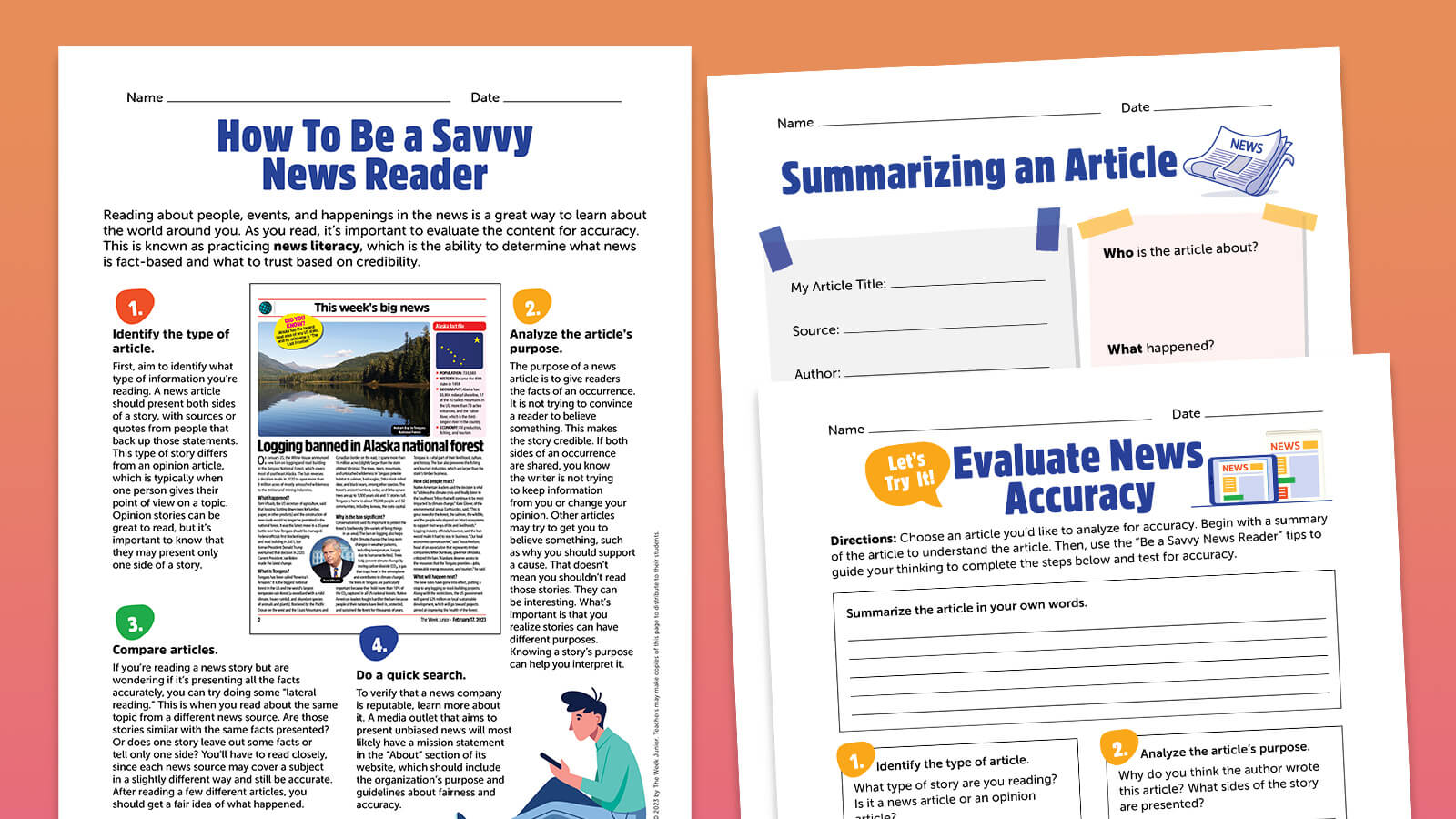
The Week Junior magazine is a kid-friendly, unbiased current events news source. It’s a safe and trusted partner to help you explain to kids what’s happening in the world while providing fun reading content including puzzles, recipes, crafts, and more.
The benefits of using current events in the classroom are practically endless. News stories help students better understand their communities, new perspectives, and real-world events. Introducing current events in the classroom can promote critical thinking, empathy, reading skills, global awareness, and so much more. Whether you’re assigning weekly current events summaries or conducting a single lesson, our free current events worksheets for grades 3-8 are the perfect companion.
Inside, you’ll find two options for current event summaries. In addition, our savvy news reader tips and activity will guide students through determining if an article is trustworthy. In a world of so many media outlets, news literacy is a crucial skill!
Get my current events worksheets!
Current Events Summary Worksheets
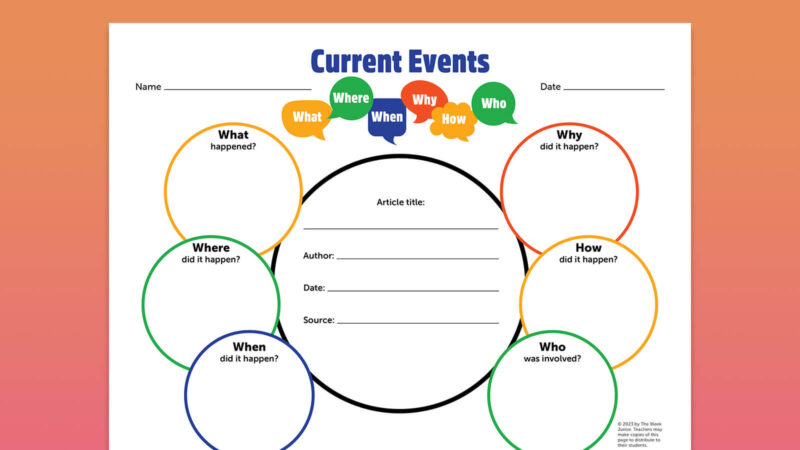
WeAreTeachers
- When giving current events assignments, give students the option to use one of two article summary worksheets to get started.
- Choose from a graphic organizer–style worksheet or a traditional fill-in worksheet to evaluate an article.
News Accuracy Worksheets
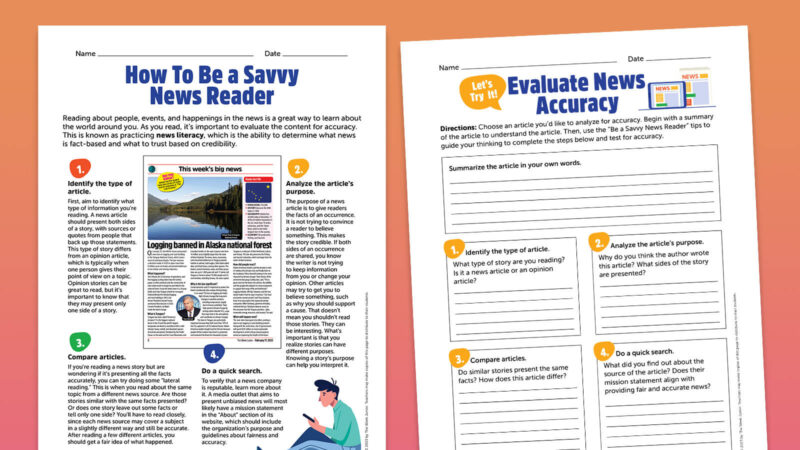
- Begin a lesson on news literacy. Use the list tips to educate students on determining a news article’s accuracy and credibility.
- Then, have students complete the corresponding worksheet to practice what they learned and evaluate a news article on their own.
The Week Junior , an Unbiased Classroom Current Events Resource
The Week Junior magazine is an awesome way to expose 3rd through 8th grade readers to current events through a kid-friendly, unbiased magazine. There’s something for every student, with sections on sports, culture, movies, crafts, recipes, and so much more! Get a free issue of The Week Junior , and watch kids dive into this interactive reading resource.
You Might Also Like
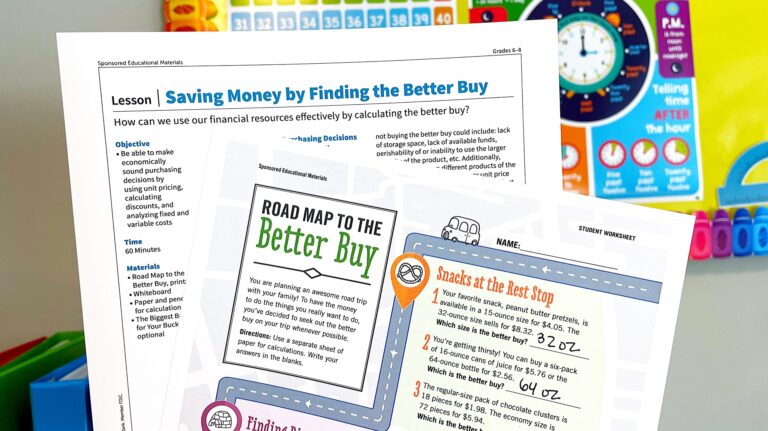
Finding the Better Buy Is a Great Lesson for Grades 6-8
Don't miss the worksheet on planning a road trip! Continue Reading
Copyright © 2023. All rights reserved. 5335 Gate Parkway, Jacksonville, FL 32256
- PRO Courses Guides New Tech Help Pro Expert Videos About wikiHow Pro Upgrade Sign In
- EDIT Edit this Article
- EXPLORE Tech Help Pro About Us Random Article Quizzes Request a New Article Community Dashboard This Or That Game Popular Categories Arts and Entertainment Artwork Books Movies Computers and Electronics Computers Phone Skills Technology Hacks Health Men's Health Mental Health Women's Health Relationships Dating Love Relationship Issues Hobbies and Crafts Crafts Drawing Games Education & Communication Communication Skills Personal Development Studying Personal Care and Style Fashion Hair Care Personal Hygiene Youth Personal Care School Stuff Dating All Categories Arts and Entertainment Finance and Business Home and Garden Relationship Quizzes Cars & Other Vehicles Food and Entertaining Personal Care and Style Sports and Fitness Computers and Electronics Health Pets and Animals Travel Education & Communication Hobbies and Crafts Philosophy and Religion Work World Family Life Holidays and Traditions Relationships Youth
- Browse Articles
- Learn Something New
- Quizzes Hot
- This Or That Game New
- Train Your Brain
- Explore More
- Support wikiHow
- About wikiHow
- Log in / Sign up
- Education and Communications
- Critical Reviews
How to Write an Article Review
Last Updated: September 8, 2023 Fact Checked
This article was co-authored by Jake Adams . Jake Adams is an academic tutor and the owner of Simplifi EDU, a Santa Monica, California based online tutoring business offering learning resources and online tutors for academic subjects K-College, SAT & ACT prep, and college admissions applications. With over 14 years of professional tutoring experience, Jake is dedicated to providing his clients the very best online tutoring experience and access to a network of excellent undergraduate and graduate-level tutors from top colleges all over the nation. Jake holds a BS in International Business and Marketing from Pepperdine University. There are 13 references cited in this article, which can be found at the bottom of the page. This article has been fact-checked, ensuring the accuracy of any cited facts and confirming the authority of its sources. This article has been viewed 3,091,478 times.
An article review is both a summary and an evaluation of another writer's article. Teachers often assign article reviews to introduce students to the work of experts in the field. Experts also are often asked to review the work of other professionals. Understanding the main points and arguments of the article is essential for an accurate summation. Logical evaluation of the article's main theme, supporting arguments, and implications for further research is an important element of a review . Here are a few guidelines for writing an article review.
Education specialist Alexander Peterman recommends: "In the case of a review, your objective should be to reflect on the effectiveness of what has already been written, rather than writing to inform your audience about a subject."
Things You Should Know
- Read the article very closely, and then take time to reflect on your evaluation. Consider whether the article effectively achieves what it set out to.
- Write out a full article review by completing your intro, summary, evaluation, and conclusion. Don't forget to add a title, too!
- Proofread your review for mistakes (like grammar and usage), while also cutting down on needless information. [1] X Research source
Preparing to Write Your Review

- Article reviews present more than just an opinion. You will engage with the text to create a response to the scholarly writer's ideas. You will respond to and use ideas, theories, and research from your studies. Your critique of the article will be based on proof and your own thoughtful reasoning.
- An article review only responds to the author's research. It typically does not provide any new research. However, if you are correcting misleading or otherwise incorrect points, some new data may be presented.
- An article review both summarizes and evaluates the article.

- Summarize the article. Focus on the important points, claims, and information.
- Discuss the positive aspects of the article. Think about what the author does well, good points she makes, and insightful observations.
- Identify contradictions, gaps, and inconsistencies in the text. Determine if there is enough data or research included to support the author's claims. Find any unanswered questions left in the article.

- Make note of words or issues you don't understand and questions you have.
- Look up terms or concepts you are unfamiliar with, so you can fully understand the article. Read about concepts in-depth to make sure you understand their full context.

- Pay careful attention to the meaning of the article. Make sure you fully understand the article. The only way to write a good article review is to understand the article.

- With either method, make an outline of the main points made in the article and the supporting research or arguments. It is strictly a restatement of the main points of the article and does not include your opinions.
- After putting the article in your own words, decide which parts of the article you want to discuss in your review. You can focus on the theoretical approach, the content, the presentation or interpretation of evidence, or the style. You will always discuss the main issues of the article, but you can sometimes also focus on certain aspects. This comes in handy if you want to focus the review towards the content of a course.
- Review the summary outline to eliminate unnecessary items. Erase or cross out the less important arguments or supplemental information. Your revised summary can serve as the basis for the summary you provide at the beginning of your review.

- What does the article set out to do?
- What is the theoretical framework or assumptions?
- Are the central concepts clearly defined?
- How adequate is the evidence?
- How does the article fit into the literature and field?
- Does it advance the knowledge of the subject?
- How clear is the author's writing? Don't: include superficial opinions or your personal reaction. Do: pay attention to your biases, so you can overcome them.
Writing the Article Review

- For example, in MLA , a citation may look like: Duvall, John N. "The (Super)Marketplace of Images: Television as Unmediated Mediation in DeLillo's White Noise ." Arizona Quarterly 50.3 (1994): 127-53. Print. [10] X Trustworthy Source Purdue Online Writing Lab Trusted resource for writing and citation guidelines Go to source

- For example: The article, "Condom use will increase the spread of AIDS," was written by Anthony Zimmerman, a Catholic priest.

- Your introduction should only be 10-25% of your review.
- End the introduction with your thesis. Your thesis should address the above issues. For example: Although the author has some good points, his article is biased and contains some misinterpretation of data from others’ analysis of the effectiveness of the condom.

- Use direct quotes from the author sparingly.
- Review the summary you have written. Read over your summary many times to ensure that your words are an accurate description of the author's article.

- Support your critique with evidence from the article or other texts.
- The summary portion is very important for your critique. You must make the author's argument clear in the summary section for your evaluation to make sense.
- Remember, this is not where you say if you liked the article or not. You are assessing the significance and relevance of the article.
- Use a topic sentence and supportive arguments for each opinion. For example, you might address a particular strength in the first sentence of the opinion section, followed by several sentences elaborating on the significance of the point.

- This should only be about 10% of your overall essay.
- For example: This critical review has evaluated the article "Condom use will increase the spread of AIDS" by Anthony Zimmerman. The arguments in the article show the presence of bias, prejudice, argumentative writing without supporting details, and misinformation. These points weaken the author’s arguments and reduce his credibility.

- Make sure you have identified and discussed the 3-4 key issues in the article.
Sample Article Reviews

Expert Q&A

You Might Also Like

- ↑ https://writing.wisc.edu/handbook/grammarpunct/proofreading/
- ↑ https://libguides.cmich.edu/writinghelp/articlereview
- ↑ https://www.ncbi.nlm.nih.gov/pmc/articles/PMC4548566/
- ↑ Jake Adams. Academic Tutor & Test Prep Specialist. Expert Interview. 24 July 2020.
- ↑ https://guides.library.queensu.ca/introduction-research/writing/critical
- ↑ https://www.iup.edu/writingcenter/writing-resources/organization-and-structure/creating-an-outline.html
- ↑ https://writing.umn.edu/sws/assets/pdf/quicktips/titles.pdf
- ↑ https://owl.purdue.edu/owl/research_and_citation/mla_style/mla_formatting_and_style_guide/mla_works_cited_periodicals.html
- ↑ https://www.ncbi.nlm.nih.gov/pmc/articles/PMC4548565/
- ↑ https://writingcenter.uconn.edu/wp-content/uploads/sites/593/2014/06/How_to_Summarize_a_Research_Article1.pdf
- ↑ https://www.uis.edu/learning-hub/writing-resources/handouts/learning-hub/how-to-review-a-journal-article
- ↑ https://writingcenter.unc.edu/tips-and-tools/editing-and-proofreading/
About This Article

If you have to write an article review, read through the original article closely, taking notes and highlighting important sections as you read. Next, rewrite the article in your own words, either in a long paragraph or as an outline. Open your article review by citing the article, then write an introduction which states the article’s thesis. Next, summarize the article, followed by your opinion about whether the article was clear, thorough, and useful. Finish with a paragraph that summarizes the main points of the article and your opinions. To learn more about what to include in your personal critique of the article, keep reading the article! Did this summary help you? Yes No
- Send fan mail to authors
Reader Success Stories
Prince Asiedu-Gyan
Apr 22, 2022
Did this article help you?
Sammy James
Sep 12, 2017
Juabin Matey
Aug 30, 2017
Oct 25, 2023
Vanita Meghrajani
Jul 21, 2016

Featured Articles

Trending Articles

Watch Articles

- Terms of Use
- Privacy Policy
- Do Not Sell or Share My Info
- Not Selling Info
Get all the best how-tos!
Sign up for wikiHow's weekly email newsletter
Browse Course Material
Course info.
- Jared David Berezin

Departments
- Comparative Media Studies/Writing
As Taught In
- History of Science and Technology
- Academic Writing
- Nonfiction Prose
- Periodic Literature
- Technical Writing
Learning Resource Types
Science writing and new media: communicating science to the public, rhetorical analysis of a news article.
Purpose: A close reader of the world looks beneath the surface of behavior and language, and explores instances of communication as rhetorical events rich with meaning. The purpose of this assignment is to analyze an online news article, and identify and discuss the writer’s rhetorical decisions and their impacts. Rather than state whether you believe the article is “good” or “bad”, or whether you liked it or not, apply a close-reading of the text. This assignment includes two main deliverables: 1) a written essay, and 2) a class discussion.
I. Written Essay (Individually Written)
Craft a coherent rhetorical analysis essay that includes the following two components:
- Very brief summary of the article
- Close reading of the work
For the summary portion (1), rather than describe everything in the article, very briefly share only the main points of the article. The summary should be no more than a brief paragraph. In your close reading (2)—the heart of this assignment—you should include and provide evidence for the following information:
- Who is the author? (name, title, and credentials)
- Where was the article published? (newspaper/magazine/website title)
- What is the purpose and goal of the article?
- Who is the intended audience of the article?
- Ethos : appeals to the character/expertise of the writer and cited authorities
- Logos : appeals based on logic, reasoning, and relevant evidence
- Pathos : appeals to the beliefs, emotions, and values of the audience
- Diction, figurative language, tone, organization, length
- Does the writer use visual images in the article? If so, what is their impact?
- What evidence (if any) does the author provide to support her/his claims?
- Where does this evidence come from?
- What research might the author have conducted before writing the article?
- What information does the author not include in the article, and why?
- Is the author biased in any way?
- Is the article trustworthy?
II. Class Discussion (Co-Lead With a Partner)
You will lead a 10-15 minute discussion of the article with a classmate, which will require you to meet beforehand and plan your questions. After introducing the article, try and stimulate discussion among your classmates with purposeful, open-ended questions. As mentioned above, the written rhetorical analysis essay should be completed individually, and the discussion should be led jointly with your partner.
Audience: Your audience for both the essay and discussion includes your teacher and classmates: we are a community of diverse people interested in the rhetorical choices involved in science articles written for the public. Since we have not read the article as closely as you have, it is critical that you provide the reasoning for all of your analytical claims involving the article.
Be sure to support all of your analytical points with specific evidence from the article, which will help your audience comprehend and support your rhetorical analysis. Since your audience has learned about the elements of a rhetorical situation (e.g. audience, purpose, context, genre) and rhetorical appeals (e.g. ethos, logos, pathos), you do not need to define these concepts in your essay.
Format requirements: MS Word (.doc) or Adobe (.pdf) with the following:
- 1"X1" margins
- Size 12 Times New Roman font
- Single-spaced text
- 600-800 words
- Include page numbers
Before you submit your essay, re-read your writing, preferably aloud, to detect ideas that need to be tightened and/or reorganized for clarity.
Due Date: Be sure to write down and remember your specific due date and assigned article. Upload your essay to the course website anytime before your class discussion.

You are leaving MIT OpenCourseWare
news article summary
All Formats
Resource types, all resource types.
- Rating Count
- Price (Ascending)
- Price (Descending)
- Most Recent
News article summary
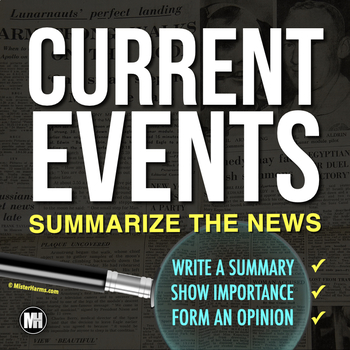
CURRENT EVENTS: News Article Summary , Main Idea, Reading Comprehension | NEWSELA

- Google Apps™

News Article Summary - OSSLT News Report Graphic Organizer OSSLC OLC4O - Digital

News Article Summary - Summarizing a News Report OSSLT - OSSLC OLC4O - Digital

News Article Summary

- Google Drive™ folder

Common Core: Summarizing Informational Texts using News Articles (Lesson)

3D Printing Human Tissues - News Article Summary Worksheet

- Google Docs™

Print & Digital Research Project & Current Events News Article Summary Analysis
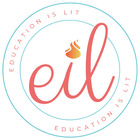
Science News Article Summary Template

- Word Document File

Google Technology News Article Summary - Online Distance Learning

- Internet Activities

Business News Article Summary Worksheet
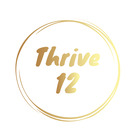
Summarizing a News Article

"In the News " student form for reading articles and writing summaries

News Article Pre-Writing Lesson Plan - Analysis, Summary , & Writing Organization
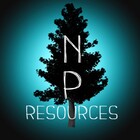
News Article Summary Analysis

Academic Skills Practice: SUMMARIZING News Articles

- Easel Activity

Technology News Article Summary Worksheet
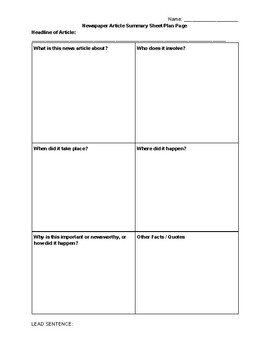
News Article Plan Page and Summary Sheet (Newspaper Reading and Writing)

News Article Summary & Reflection Assignment
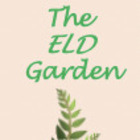
News article summary template

Current Events, WORLD HISTORY LESSON 99/100, Summarizing News Articles

Current Events, RECENT WORLD HISTORY LESSON 15/45, Summarizing News Articles
- We're hiring
- Help & FAQ
- Privacy policy
- Student privacy
- Terms of service
- Tell us what you think

- Walden University
- Faculty Portal
Common Assignments: Summary
For each source listed, you will begin with a summary of the information you found in that specific source. The summary section gives your reader an overview of the important information from that source. Remember that you are focusing on a source's method and results, not paraphrasing the article's argument or evidence.
The questions below can help you produce an appropriate, scholarly summary:
- What is the topic of the source?
- What actions did the author perform within the study and why?
- What were the methods of the author?
- What was the theoretical basis for the study?
- What were the conclusions of the study?
Remember, a summary should be similar to an abstract of a source and written in past tense (e.g. "The authors found that…" or "The studies showed…"), but it should not be the source's abstract. Each summary should be written in your own words.
Summarizing Video Playlist
Note that these videos were created while APA 6 was the style guide edition in use. There may be some examples of writing that have not been updated to APA 7 guidelines.

Related Resources
Didn't find what you need? Email us at [email protected] .
- Previous Page: Formatting
- Next Page: Critique/Analysis
- Office of Student Disability Services
Walden Resources
Departments.
- Academic Residencies
- Academic Skills
- Career Planning and Development
- Customer Care Team
- Field Experience
- Military Services
- Student Success Advising
- Writing Skills
Centers and Offices
- Center for Social Change
- Office of Academic Support and Instructional Services
- Office of Degree Acceleration
- Office of Research and Doctoral Services
- Office of Student Affairs
Student Resources
- Doctoral Writing Assessment
- Form & Style Review
- Quick Answers
- ScholarWorks
- SKIL Courses and Workshops
- Walden Bookstore
- Walden Catalog & Student Handbook
- Student Safety/Title IX
- Legal & Consumer Information
- Website Terms and Conditions
- Cookie Policy
- Accessibility
- Accreditation
- State Authorization
- Net Price Calculator
- Contact Walden
Walden University is a member of Adtalem Global Education, Inc. www.adtalem.com Walden University is certified to operate by SCHEV © 2024 Walden University LLC. All rights reserved.
In the face of online misinformation, these teens are learning how to sort fact from fiction
Beyond the classroom, these tools can help students understand 'the world around them'.

Social Sharing
Sameer Ferdousi, 16, is enthralled by journalism.
A former middle school "news anchor" who reported on events at daily assemblies, Ferdousi is currently on staff at his high school newspaper.
He's also active on social media, like the vast majority of teens, but he's worried about the misinformation he sees on his feed.
"Anyone can make a post and spread it to millions of people," said the Mississauga, Ont., student. "I've seen a lot more fake news. That kind of sparked my interest for chasing the truth."

Teen fact checkers take on fake TikTok posts
Ferdousi's passion for news has led him to his latest gig: joining the Canadian squad of the international Teen Fact-Checking Network.
More than 91 per cent of young Canadians aged 15-24 are on social media today, according to Statistics Canada , with 62 per cent of this cohort turning to social media first for their news and information .
Yet teens are also the least worried about encountering false information online — a concern given that young Canadians are exposed to online harms more than any other population , StatsCan says.
How teens learn about navigating the online world varies from class to class, but two digital media literacy programs aim to get more Canadian students scrutinizing their socials.

Media literacy group MediaSmarts is spearheading the Teen Fact-Checking Network in Canada, which has partner editions in the U.S., Brazil, India and Spain. The Ottawa-based organizers whittled applicants down to 16 students (English- and French-speaking) for the inaugural lineup.
The students first participated in a boot camp: learning strategies to analyze online content, taking lessons on how to pitch and develop ideas, as well as building technical skills, such as video editing.
"It was a lot at first," Ferdousi admitted. But he said the training — which includes reverse image searching, for instance, or tips on detecting pics doctored via artificial intelligence — has levelled up his critical thinking.
"Whenever I'm seeing a story … or when I'm seeing an image, I check for these little signs: if they're doctored, if they're not telling the whole story, if they're missing some context," he said.
WATCH | A teen from U.S. partner MediaWise digs into unusual Keanu Reeves posts:
MediaSmarts executive director Kathryn Hill believes the amount of information available online is "wonderful," but that abundance also requires verification of what we find.

Enlisting teens to teach teens
The Teen Fact-Checking Network "is an opportunity to both teach teens directly about how to do that and how to do it well, but also to teach them how to teach others," she said.
"We can all learn from these" videos, Hill added, since the vision for MediaSmarts is to improve the digital media literacy of all Canadians.
WATCH | MediaWise teen fact-checker analyzes politicized posts starring Taylor Swift:
Evaluating what's online
A high school teacher for more than 20 years, Laura McCarron has first-hand knowledge of why students need to learn to analyze material on the internet.

How a meme became a teachable moment on digital media literacy
"Students have more freedom and flexibility to be able to research online … and when they're looking up anything, it means that they're not necessarily always looking at [reliable sources]," said the Fredericton social studies teacher.
"It's become so much more important as a teacher to be able to establish rules and guidelines."
In fall 2020, McCarron was among the first teachers to participate in a new digital literacy offering from civic education organization CIVIX.

Called CTRL-F (named for the keyboard shortcut for "find" within a webpage or document), the lessons can be incorporated into the curriculum of various subjects — such as English, social studies, political science, history or media classes.
The goal is to teach middle and high school students lateral reading techniques , such as digging into who's behind a specific piece of content and checking what other sources say about a particular topic.
Even with straightforward strategies and tips, however, there's a learning curve. McCarron has seen students become frustrated when they realize that a Google search doesn't necessarily generate a trustworthy answer.
Eventually, though, "they're heavily engaged in conversation about what is reliable and what is not," she said.
"When they leave high school, they can take these tools, they can take these sources and they can continue to use them in everyday learning and understanding the world around them."
- Students say misinformation abounds online. Experts say critical thinking helps them navigate it
- Winnipeg students learning the skills needed to deal with online misinformation, disinformation
Declan DeWolfe, who is one of McCarron's students, now has a toolbox of strategies — searching out reliable sources, verifying information — that they developed by completing research assignments over the past few grades.
The approach has become "less of an explicit thing that you practise in class and more a way that you interact with the internet," said the Grade 11 student.
Though the 16-year-old chooses to avoid political or news content when scrolling TikTok (opting to focus on sketch comedy, movies and video game content instead), DeWolfe feels social media users today are bombarded with conflicting opinions, misinformation and disinformation even when they try to avoid it.
As a result, "it's extremely important to learn how to discern [what's] credible" from content "trying to grab your attention for clout reasons or just trying to mislead you."

Annie McCaskill, a peer in Grade 12, admits to being frustrated by the extra effort required to evaluate multiple online sources. But she agrees it's important to reinforce the mentality that "not everything is true, we should check that."
For example, "we've been seeing more articles that are written solely by AI," said the 17-year-old. "I think that's a big problem: to just trust whatever's being said [online], especially now, when there might not even be any human oversight at all."

Back in Ontario, Ferdousi emphasizes students today are aware that fake news, out-of-context posts and doctored images and videos exist online. But it's easy for impressionable teens to trip up.
It happened to him just a few weeks ago. A massive Drake fan, he fell for a friend's TikTok post about a surprise concert, which turned out to be fake.
So Ferdousi is eager to get to the bottom of suspicious online content — and inspiring other teens to adopt that mindset, too.
"Maybe if their parents are getting tricked by misleading news articles or sites, videos, pictures and those types of things, kids can be their own voice of reason in their homes."
With files from Deana Sumanac-Johnson and Nazima Walji
Related Stories
- Analysis Ont. school boards are trying to knock down the social media giants. Do their cases stand a chance?
- Math lessons from deepfakes of Drake, other celebrities on TikTok raise concerns about misinformation
- Amid rise in AI deepfakes, experts urge school curriculum updates for online behaviour
- Why passing laws to curb online disinformation is so difficult, according to tech and legal experts
- How kids and teens can navigate social media in the era of fake news
Add some “good” to your morning and evening.
Start the day smarter. Get the CBC News Morning Brief, the essential news you need delivered to your inbox.

CPS Online Library Research Guide (UNH Manchester Library): Summarize an Article
- Home & Table of Contents
- Different Types of Information
- The Savvy Information Consumer
- Primary & Secondary Sources
- Periodical Literature
- Peer Review
- Research Glossary
- Business Research Databases
- Understanding the Assignment
- Preliminary Considerations
- 7 Steps to Completing a Research Assignment
- Define the Topic
- Find & Evaluate Your Sources
- Research Integrity & Citing Your Sources
- Searching for Information
- Evaluating Information
- How to Read an Academic Journal Article This link opens in a new window
- Evaluating Social Media Sources
- Writing Your Research Paper
- Create a Literature Review
- Summarize an Article
- How to Write an Abstract
- How to Write a Book Review
- How to Do an Annotated Bibliography
- Finding Professional Organizations
- Find Key Journals in Your Field of Study
- Find Peer-Reviewed Articles
- Write a Research Paper Proposal
- Research a Company This link opens in a new window
- Citing Your Sources
- Avoiding Plagiarism
- NHCUC Libraries
- Other Types of Research
- Academic Libraries in NH
- Government Documents
- Using Google for Academic Research
- Information Literacy
- Developing Effective Library Research Assignments
- Using Permalinks
- Primary Source Websites
Summarize or Analyze an Article
Perhaps your instructor has given you an article, or you have found one on your own. The assignment is to summarize or analyze the article. Summarizing and analyzing are not the same activity. Below are outlined the steps to take in fulfilling each type of assignment.
Summarize an Article
A summary is a report of author’s viewpoint. A summary is rewriting what you have read in your own words. One can think of the summary as the short version of the original writing. You should tell the reader what were the main and important points of the writing. Your summary should include the thesis or the main argument of the paper. In the summary, you should not include your opinion or what you think the author is trying to imply by writing it. It should only focus on what the author has written. Summary should also not include any kind of evaluation by the reader. You should not write what you think are the author’s strong or weak arguments.
One of the other important information the summary should include is the name of the book or article, the author’s name and the publication information. The publication information is when that piece of writing was first published (Date or year) and where was it published? This information usually goes in the introductory paragraph which is also going to include the thesis statement of the writing you have read.
The summary should also be formal. You should not address the author by their first name; use only their last name of the author. It is typed and usually only one paragraph depending on what you are writing about. I have only listed some of the most common factors that need to be included in the summary. Your instructor could give you a different structure they want you to follow and other guidelines.
What Your Summary Should Address
A brief paragraph describing and informing the reader on three or more of the following elements:
- Who: those involved
- What: the event or topic being covered
- When: time, period, era, night or day
- Where: the location, distance, place
- Why: the cause or causes
- How: the process(es)
Analyze an Article
An analysis is breaking a large topic into smaller pieces to better understand the subject. In an analysis you are not telling the reader about the main viewpoints of the author or what the writing is about, it is examining the structure and the details of the writing. You break the story into smaller parts to understand it better. Many instructors do not want you to express your opinion about the subject discussed in the paper. You can only give your opinion on how well the author did to convince the reader.
The first paragraph should be the introductory paragraph and it should include the title, author’s name, and publication details. You can also give the reader some background information on the subject being discussed in the writing and then give the thesis statement of the paper. First paragraph can also have a short summary about the paper.
In your analysis paper, you should address what is the main argument that the author is making and how well do they support the argument. The other factor to address is how reliable are the sources, and the authority that the author cites to make their argument strong. An analysis paper can also include the strengths and weaknesses of the paper and how they affect the argument being made by the author. You should also examine the tools like statistics, examples or citing of an authority to analyze the author’s reasoning for writing the paper. The other points one could address in their analysis paper are does the author address the opposition’s view point and does he/she attempts to refute it. Many instructors do not want you to express your opinion about the subject discussed in the paper. You can only give your opinion on how well the author did to convince the reader. However, depending on your class level and your instructor it might be different and you might be allowed to express your opinion on the subject matter and tell whether you agree or disagree with the author.
What Your Analysis Should Address
Examine the summary elements described above in order to look for their meaning in the following contexts:
- Relationships, trends, patterns
- Roles of people, places, objects, situations
- Consequences or results of events, decisions and processes
- Causes and their effects
- Advantages and disadvantages/ gains and losses
- Strengths and weaknesses
Adapted from: The Writing Center . College of the Sequoias
- << Previous: Create a Literature Review
- Next: How to Write an Abstract >>
- Last Updated: Apr 9, 2024 2:30 PM
- URL: https://libraryguides.unh.edu/CPSonlineLibraryResearch
What the trans care recommendations from the NHS England report mean
The report calls for more research on puberty blockers and hormone therapies.
A new report commissioned by the National Health Service England advocates for further research on gender-affirming care for transgender youth and young adults.
Dr. Hillary Cass, a former president of the Royal College of Paediatrics and Child Health, was appointed by NHS England and NHS Improvement to chair the Independent Review of Gender Identity Services in 2020 amid a rise in referrals to NHS' gender services. Upon review, she advises "extreme caution" for the use of hormone therapies.
"It is absolutely right that children and young people, who may be dealing with a complex range of issues around their gender identity, get the best possible support and expertise throughout their care," Cass states in the report.
Around 2022, about 5,000 adolescents and children were referred to the NHS' gender services. The report estimated that roughly 20% of children and young people seen by the Gender Identity Development Service (GIDS) enter a hormone pathway -- roughly 1,000 people under 18 in England.
Following four years of data analysis, Cass concluded that "while a considerable amount of research has been published in this field, systematic evidence reviews demonstrated the poor quality of the published studies, meaning there is not a reliable evidence base upon which to make clinical decisions, or for children and their families to make informed choices."
Cass continued: "The strengths and weaknesses of the evidence base on the care of children and young people are often misrepresented and overstated, both in scientific publications and social debate," read the report.
Among her recommendations, she urged the NHS to increase the available workforce in this field, to work on setting up more regional outlets for care, increase investment in research on this care, and improve the quality of care to meet international guidelines.
Cass' review comes as the NHS continues to expand its children and young people's gender identity services across the country. The NHS has recently opened new children and young people's gender services based in London and the Northwest.
NHS England, the country's universal healthcare system, said the report is expected to guide and shape its use of gender affirming care in children and potentially impact youth patients in England accessing gender-affirming care.

MORE: Lawsuit filed by families against Ohio trans care ban legislation
The debate over transgender youth care.
In an interview with The Guardian , Cass stated that her findings are not intended to undermine the validity of trans identities or challenge young people's right to transition but to improve the care they are receiving.
"We've let them down because the research isn't good enough and we haven't got good data," Cass told the news outlet. "The toxicity of the debate is perpetuated by adults, and that itself is unfair to the children who are caught in the middle of it. The children are being used as a football and this is a group that we should be showing more compassion to."
In the report, Cass argued that the knowledge and expertise of "experienced clinicians who have reached different conclusions about the best approach to care" has been "dismissed and invalidated" amid arguments concerning transgender care in youth.
Cass did not immediately respond to ABC News' request for comment.
Recommendations for trans youth care
Cass is calling for more thorough research that looks at the "characteristics, interventions and outcomes" of NHS gender service patients concerning puberty blockers and hormone therapy, particularly among children and adolescents.
The report's recommendations also urge caregivers to take an approach to care that considers young patients "holistically and not solely in terms of their gender-related distress."
The report notes that identity exploration is "a completely natural process during childhood and adolescence."
Cass recommends that pre-pubertal children and their families have early discussions about how parents can best support their child "in a balanced and non-judgemental way," which may include "psychological and psychopharmacological treatments" to manage distress associated with gender incongruence and co-occurring conditions.
In past interviews, U.S. physicians told ABC News , that patients, their physicians and their families often engage in a lengthy process of building a customized and individualized approach to care, meaning not every patient will receive any or every type of gender-affirming medical care option.
Cass' report states that evidence particularly for puberty blockers in children and adolescents is "weak" regarding the impact on "gender dysphoria, mental or psychosocial health. The effect on cognitive and psychosexual development remains unknown."

The NHS has said it will halt routine use of puberty blockers as it prepares for a study into the practice later this year.
MORE: Amid anti-LGBTQ efforts, transgender community finds joy in 'chosen families'
According to the Endocrine Society puberty blockers, as opposed to hormone therapy, temporarily pause puberty so patients have more time to explore their gender identity.
The report also recommends "extreme caution" for transgender youth from age 16 who take more permanent hormone therapies.
"There should be a clear clinical rationale for providing hormones at this stage rather than waiting until an individual reaches 18," the report's recommendations state.
Hormone therapy, according to the Endocrine Society , triggers physical changes like hair growth, muscle development, body fat and more, that can help better align the body with a person's gender identity. It's not unusual for patients to stop hormone therapy and decide that they have transitioned as far as they wish, physicians have told ABC News.
Cass' report asserts that there are many unknowns about the use of both puberty blockers and hormones for minors, "despite their longstanding use in the adult transgender population."
"The lack of long-term follow-up data on those commencing treatment at an earlier age means we have inadequate information about the range of outcomes for this group," the report states.
Cass recommends that NHS England facilities have procedures in place to follow up with 17 to 25-year-old patients "to ensure continuity of care and support at a potentially vulnerable stage in their journey," as well as allow for further data and research on transgender minors through the years.
Several British medical organizations, including British Psychological Society and the Royal College of Paediatrics and Child Health, commended the report's recommendations to expand the workforce and invest in further research to allow young people to make better informed decisions.
“Dr Cass and her team have produced a thought-provoking, detailed and wide-ranging list of recommendations, which will have implications for all professionals working with gender-questioning children and young people," said Dr Roman Raczka, of the British Psychological Society. "It will take time to carefully review and respond to the whole report, but I am sure that psychology, as a profession, will reflect and learn lessons from the review, its findings and recommendations."
Some groups expressed fears that the report will be misused by anti-transgender groups.
"All children have the right to access specialist effective care on time and must be afforded the privacy to make decisions that are appropriate for them in consultation with a specialist," said human rights group Amnesty International. "This review is being weaponised by people who revel in spreading disinformation and myths about healthcare for trans young people."
Transgender care for people under 18 has been a source of contention in both the United States and the United Kingdom. Legislation is being pushed across the U.S. by many Republican legislators focused on banning all medical care options like puberty blockers and hormone therapies for minors. Some argue that gender-affirming care is unsafe for youth, or that they should wait until they're older.
Gender-affirming medical does come with risks, according to the Endocrine Society , including impacts to bone mineral density, cholesterol levels, and blood clot risks. However, physicians have told ABC News that all medications, surgeries or vaccines come with some kind of risk.
Major national medical associations in the U.S., including the American Academy of Pediatrics, the American Medical Association, the American Academy of Child and Adolescent Psychiatry, and more than 20 others have argued that gender-affirming care is safe, effective, beneficial, and medically necessary.
The first-of-its-kind gender care clinic at Johns Hopkins Hospital in Maryland opened in the 1960s, using similar procedures still used today.
Some studies have shown that some gender-affirming options can have positive impacts on the mental health of transgender patients, who may experience gender-related stress.
Related Topics
- United Kingdom
Top Stories

Johnson hawks $95 billion aid package amid threats to speakership
- 3 hours ago

Trump, campaigning after court, comments on jurors in historic trial
- Apr 17, 3:42 PM

Senate kills Mayorkas impeachment trial, votes both articles 'unconstitutional'

Nobel-winning molecular biologist on the consequences of aging
- Apr 17, 12:05 PM

Dubai sees severe flooding after getting 2 years' worth of rain in 24 hours
- 4 hours ago
ABC News Live
24/7 coverage of breaking news and live events

IMAGES
VIDEO
COMMENTS
Record all of your notes/facts using audio, video, or written documentation. Step 4: Organize your news story. Make a list of facts and story-related information, putting the data in order from most to least important. Step 5: Write your news story, even if you intend to produce an audio or video version of it.
Step 1: Write an assigned summary as a class. Choose an article from that day's paper. By working together to go through the steps of producing a good summary, you can model the close reading strategies, as well as review the format for the assignment. Step 2: Write assigned summaries in groups.
Pre-read the article (read the abstract, introduction, and/or conclusion). Summarize the main question (s) and thesis or findings. Skim subheadings and topic sentences to understand the organization; make notes in the margins about each section. Read each paragraph within a section; make short notes about the main idea or purpose of each paragraph.
2. Choose an article that is less than one week old. Since the assignment is to write about a current event, select an article that is fresh. The article should only be one to two days old when you write the summary. It should definitely be less than one week old by the time you turn it in. 3.
Table of contents. When to write a summary. Step 1: Read the text. Step 2: Break the text down into sections. Step 3: Identify the key points in each section. Step 4: Write the summary. Step 5: Check the summary against the article. Other interesting articles. Frequently asked questions about summarizing.
Write the Summary. Once your outline is complete, take those points and blend them together to create your summary. Every summary should start with a description of the piece you're summarizing, especially its title and author. Then, using those key points you've outlined that directly support the main idea, re-write them in order to briefly ...
When writing a summary, the goal is to compose a concise and objective overview of the original article. The summary should focus only on the article's main ideas and important details that support those ideas. Guidelines for summarizing an article: State the main ideas. Identify the most important details that support the main ideas.
A secondary idea and any supporting details. The who, what, where when, how and why of the article. Important events and the timeline of those events. Problems and their resolutions. Any caveats ...
If you haven't already, it might be a good idea to review the characteristics of the three major types of news articles before asking students to answer the guiding questions below. Straight News Article: Straight news articles provide basic information to readers (the who, what, where, when, why, and how) on current events. They typically ...
2. Compile all your facts. Once you can clearly answer the "5 W's", jot down a list of all the pertinent facts and information that needs to be included in the article. Organize your facts into three groups: 1) those that need to be included in the article. 2) those that are interesting but not vital.
2. A "summary" gives the overall, big picture and a few important details. The summary should cover the entire article, saying what the author's overall main idea is as well as 2 or 3 important sub-ideas in the article. Students often make mistakes when: •They copy sentences from different sections of the article in a "mix and
The Lesson. Aim: Improved writing skills and understanding newspaper writing style. Activity: Writing short newspaper articles. Level: Intermediate to upper intermediate. Outline: Use the provided example newspaper article, or take a newspaper into the class. Ask students to read the newspaper article and summarize the contents.
Conclude with some less important—but relevant—details, interview quotes, and a summary. The first paragraph of a news article should begin with a topic sentence that concisely describes the main point of the story. Placing this sentence at the beginning of a news article hooks the reader immediately so the lede isn't buried.
Whether you're assigning weekly current events summaries or conducting a single lesson, our free current events worksheets for grades 3-8 are the perfect companion. Inside, you'll find two options for current event summaries. In addition, our savvy news reader tips and activity will guide students through determining if an article is ...
Identify the article. Start your review by referring to the title and author of the article, the title of the journal, and the year of publication in the first paragraph. For example: The article, "Condom use will increase the spread of AIDS," was written by Anthony Zimmerman, a Catholic priest. 4.
Main topic: Read the original article slowly and identify the central, primary notion that the author attempts to illustrate. Take note of the work's title, tone, and what the author is trying to prove with the evidence. Make a list of the significant points. Start writing: Set aside some time to create a summary based on the vital topic ...
For the summary portion (1), rather than describe everything in the article, very briefly share only the main points of the article. The summary should be no more than a brief paragraph. In your close reading (2)—the heart of this assignment—you should include and provide evidence for the following information:
Newspaper Article Assignment ! Name: _____ Due Date: _____ The articles you choose to read and report on are articles of your choice. It should be at least 5 paragraphs long Newspaper or Magazine: _____ ... Summary (At least 5 sentences): ...
Science news articles are a great way to learn about new ideas, discoveries, and research. However, it's important. to evaluate the authority and credibility of sources of information. In this activity, students practice their reading. comprehension and source evaluation skills by answering a series of questions about a science news article.
A newspaper story isn't the place for "purple prose" and flowery writing. That means you need to trim a story down to only its most essential facts. Pay attention to other news articles and you'll likely find that they don't use fancy words or extraneous sentences. Instead, they present the facts and not much else.
This News Article Summary Graphic Organizer teaches the Five Questions Model (W5H) for summarizing news reports. Prepare for the OSSLT, teach the OLC4O / OSSLC course, or coach essential literacy with this reading comprehension strategy. ... 30 minutes Digital Learning Assignment Ready. Subjects: Business, Career and Technical Education ...
The Process of Summarizing. Note that these videos were created while APA 6 was the style guide edition in use. There may be some examples of writing that have not been updated to APA 7 guidelines. The Process of Summarizing (video, 5:06) Transcript. Definition and Examples of Summary (video, 4:35) Transcript.
Sameer Ferdousi, 16, is enthralled by journalism. A former middle school "news anchor" who reported on events at daily assemblies, Ferdousi is currently on staff at his high school newspaper. He's ...
1 News Article News Article Review Assignment Amiere I. Martin Liberty University Author Note Amiere I. Martin Department of Higher Education, Liberty University. Correspondence concerning this article should be addressed to Amiere I. Martin Email: [email protected]. 2 News Article Introduction In the newspaper article published by the ...
Article Review vs. Response Paper . Now, let's consider the difference between an article review and a response paper: If you're assigned to critique a scholarly article, you will need to compose an article review.; If your subject of analysis is a popular article, you can respond to it with a well-crafted response paper.; The reason for such distinctions is the quality and structure of ...
The assignment is to summarize or analyze the article. Summarizing and analyzing are not the same activity. Below are outlined the steps to take in fulfilling each type of assignment. Summarize an Article. A summary is a report of author's viewpoint. A summary is rewriting what you have read in your own words.
A summary is a brief statement of the main points and ideas of an article in your own words. A summary does not include your opinions, interpretations, or analysis of the article. It only focuses on what the author has said and how they have said it. In a nutshell, a summary is a short, concise explanation of a text.
A new report from the National Health Service England's Dr. Hilary Cass advocates for further research on gender-affirming care for transgender youth and young adults.
Day 2. I WAKE UP with a hangover. Oh God. Right. I cannot believe all of that happened last night. A name floats into my cobwebbed, nauseated brain: "Ayn Rand." Jesus Christ. I breakfast alone ...
Where do you fit in the political typology? Are you a Faith and Flag Conservative? Progressive Left? Or somewhere in between? Take our quiz to find out which one of our nine political typology groups is your best match, compared with a nationally representative survey of more than 10,000 U.S. adults by Pew Research Center.